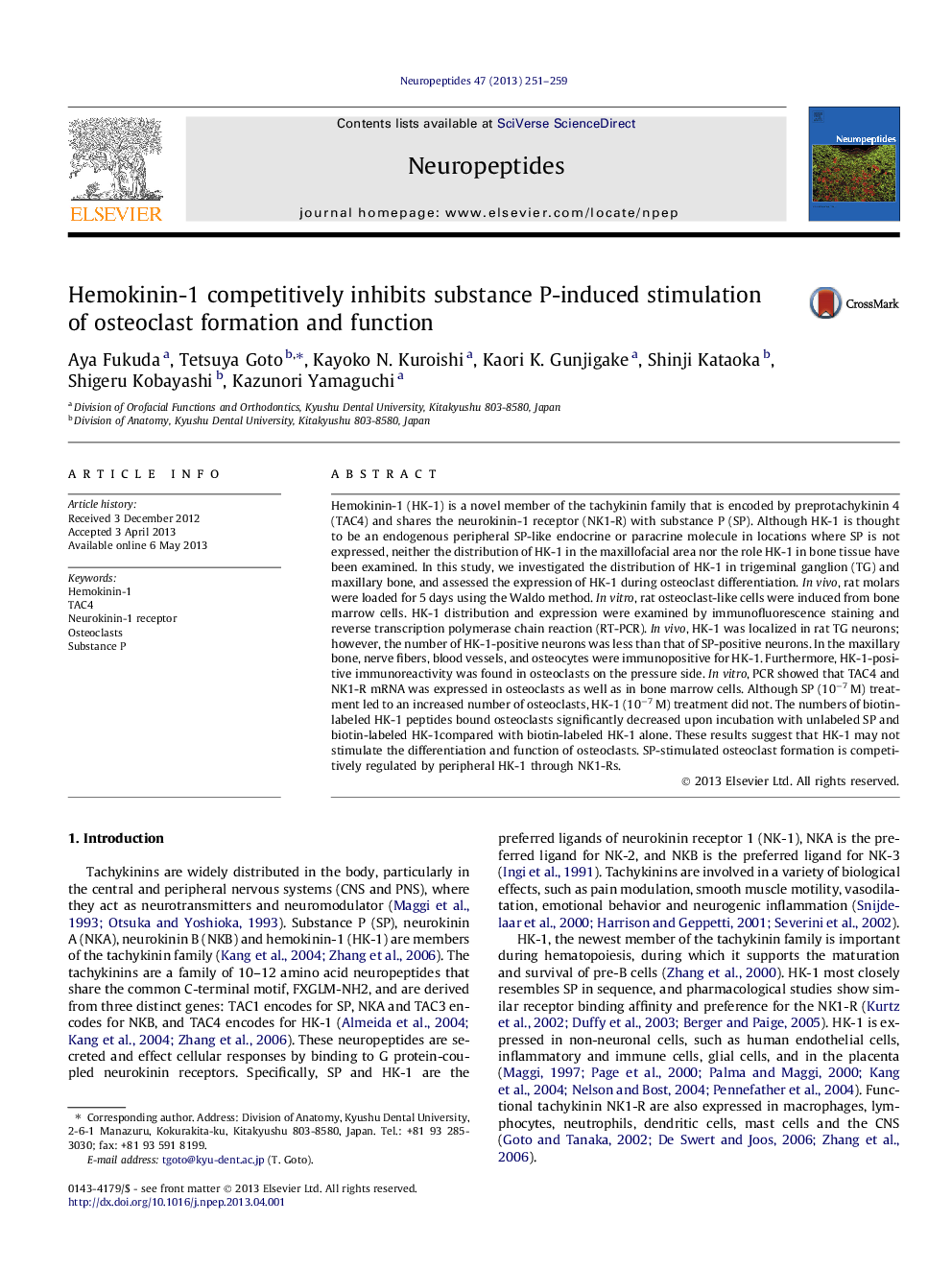| Article ID | Journal | Published Year | Pages | File Type |
|---|---|---|---|---|
| 2808104 | Neuropeptides | 2013 | 9 Pages |
Hemokinin-1 (HK-1) is a novel member of the tachykinin family that is encoded by preprotachykinin 4 (TAC4) and shares the neurokinin-1 receptor (NK1-R) with substance P (SP). Although HK-1 is thought to be an endogenous peripheral SP-like endocrine or paracrine molecule in locations where SP is not expressed, neither the distribution of HK-1 in the maxillofacial area nor the role HK-1 in bone tissue have been examined. In this study, we investigated the distribution of HK-1 in trigeminal ganglion (TG) and maxillary bone, and assessed the expression of HK-1 during osteoclast differentiation. In vivo, rat molars were loaded for 5 days using the Waldo method. In vitro, rat osteoclast-like cells were induced from bone marrow cells. HK-1 distribution and expression were examined by immunofluorescence staining and reverse transcription polymerase chain reaction (RT-PCR). In vivo, HK-1 was localized in rat TG neurons; however, the number of HK-1-positive neurons was less than that of SP-positive neurons. In the maxillary bone, nerve fibers, blood vessels, and osteocytes were immunopositive for HK-1. Furthermore, HK-1-positive immunoreactivity was found in osteoclasts on the pressure side. In vitro, PCR showed that TAC4 and NK1-R mRNA was expressed in osteoclasts as well as in bone marrow cells. Although SP (10−7 M) treatment led to an increased number of osteoclasts, HK-1 (10−7 M) treatment did not. The numbers of biotin-labeled HK-1 peptides bound osteoclasts significantly decreased upon incubation with unlabeled SP and biotin-labeled HK-1compared with biotin-labeled HK-1 alone. These results suggest that HK-1 may not stimulate the differentiation and function of osteoclasts. SP-stimulated osteoclast formation is competitively regulated by peripheral HK-1 through NK1-Rs.
